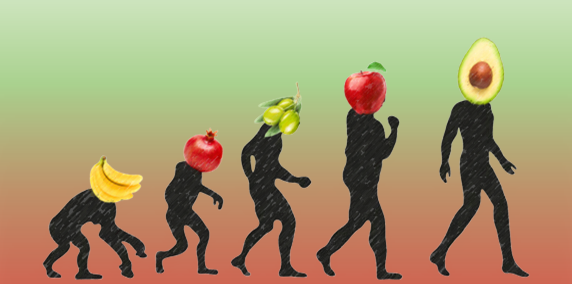Newsletter 157 – 10.11.2023
30 years ago “An Apple a day keeps the doctor away” was a common saying. But in these 30 years there have been many changes in the fruit world. Doctors today recommend “an avocado a day”, currently the fruit that seems to solve everything, while traditional fruits, like the apple, have fallen into oblivion. Its consumption is constantly falling, while others previously considered rather exotic, such as avocado, blueberry or some tropical fruits, are the new panacea.
Less, but "top"
With growing concern, the sector observes a marked trend towards a decrease in fruit consumption. Mainly the younger generations have lost thishabit. The elderly are by far the main consumers. Young people buy avocados, blueberries, bananas, strawberries and to a lesser extent mandarins, cherries and grapes. But the quantities are much smaller than those consumed by older people.
Is fruit a luxury consumption?
Fruit was considered cheap: it was not considered a special expense. This has changed, currently fruit is a not so cheap food, and for some it is even expensive. The consumer no longer considers them an essential food, which is why they are not willing to pay the required prices just like that. But the reason for the higher prices is not a whim, but is based on the significant increase in the cost of fruit production in recent years: labor and energy costs have increased, in addition, high technology, certifications, controls, good packaging etc. to obtain a quality product, which is what the market demands. If we add to this that the consumer, when deciding to spend on fruits, opts for the most expensive (blueberries, avocados, grapes, mangoes) and the best qualities, producers of “more classic” fruits face a perfect storm.
More seals, more certifications, more distinctions
In recent years, seals and certifications have multiplied, promoted to differentiate the product from the competition. These are distinctions that large supermarket chains demand, or a respondse to society's search for a form of production that is more friendly to the environment and the society. All this implies additional costs to adapt production to new demands and pay for certifications. This extra is charged to the fruit and is another reason for the increase in its prices.
Comfort and practicality above all things
The consumer looks for fruit that is easy to consume (banana, tangerine), quick to buy (in the supermarket) and convenient to carry (nets, prepacks). Comfort and practicality are what weigh the most at the time of purchase and consumption. Environmental or economic doubts are left aside. For example, certain packaging, although questionable for contaminating, is winning the battle for being more comfortable or, given a higher cost, it is preferred to buy less, but more practical.
Agrochemicals and GMOs: the bad guys
If there is something that scares consumers and is highly positioned in their minds as something bad, it is agrochemicals and GMOs. To the point that there are people who decide not to eat fruits “because they are full of poisons.” Unfortunately there is enormous confusion in this regard, based on false communications and great ignorance. Fruits are frequently used to make publications about the risks of chemical products, since they are products palpable by the consumer. It would not have the same effect if, instead of a pretty apple “full of toxins,” the image of a cereal grain or a legume were used. The consumer is unaware of the great effort that the fruit producer makes to reduce the use of chemical products. He, too, is not aware that you cannot have commercial production without all that technology. There is a certain romantic idea that fruits can be produced “naturally”, without major intervention and that the producer is the bad guy who wants to make a “profit” by forcing production with chemicals.
Who harvests the fruit?
This is a growing global problem as there are no people willing to do the collection work. The pandemic made this more than evident, as it complicated the transfer of harvesters from other regions and countries. There is a constant search to incorporate technology and simplify the harvesting task, given that this point is a growing headache for producers.
Patented fruits, are they the solution or a problem?
30 years ago, patented varieties were just beginning as the fruit industry revolution. But time has shown that they are not a panacea. The high costs, high risks and in more than one case insufficient productive and economic performance, curbed the initial enthusiasm. Currently there is a wide range of patents, some successful, promising and others that failed. On the other hand, traditional, free varieties have not disappeared. They continue to have their validity and importance, in most cases providing the bulk of production.
Traditional markets are “old”, the “new” ones are advancing
Trade in the Southern Hemisphere began with a view to supplying Europe and North America during the off-season. Almost all shipments were headed to those regions. But this changed drastically. In several cases, such as apples, pears or cherries, the old continent and the United States became a secondary market. In others, such as citrus and grapes, they lost importance. From receiving 70-80% of southern shipments, it is currently only half. The “new” markets for suppliers from the Southern Hemisphere are, first of all, the Asian ones. Far East, with China at the head; but also Southeast Asia, with Indonesia, the Philippines, Malaysia, etc., are emerging as increasingly attractive destinations. In cherries and apples, they have already become the first buyers; In citrus and grapes, volumes grow year after year. Other regions that are gaining weight in recent years are Latin American countries for South American producers and African neighbors for South Africa.
A new challenge, climate change
When we started there were climatic events (such as frost, hail, storms) that hit the producing regions. But these were exceptional events, which occurred every now and then. In recent years these events have become common, affecting more and more regions. Having a season without any extreme weather problems became an exception. The sector will have to increasingly prepare for such situations. New technologies and changes in production management will be necessary. The scheduling of campaigns will also be complicated, given that there will no longer be a secure supplier region. You will always have to have a “plan B” to replace a supplier that cannot fulfill what was promised. Climate change is a great challenge for the sector and the entire world.
The future?
Along with climate change there will be countless other challenges that the sector will face in the coming years. But fruit growing has something in its favor, it is a dynamic sector, being made up of thousands of members, spread across different regions, each with its own characteristics. And on other occasions it has already proven to adapt to changes and quickly incorporate new technologies. On the other hand, the world that demands fruit is also enormous, billions of the world's inhabitants appreciate fruit and consume it. Therefore the future is assured, although it will surely not be as we imagine it now.
Top Info will continue to be present, providing you with data, information, analysis and knowledge. The future is also a challenge for us, but we will always be on alert to see what is coming and thus improve ourselves and provide the best service for our customers.




